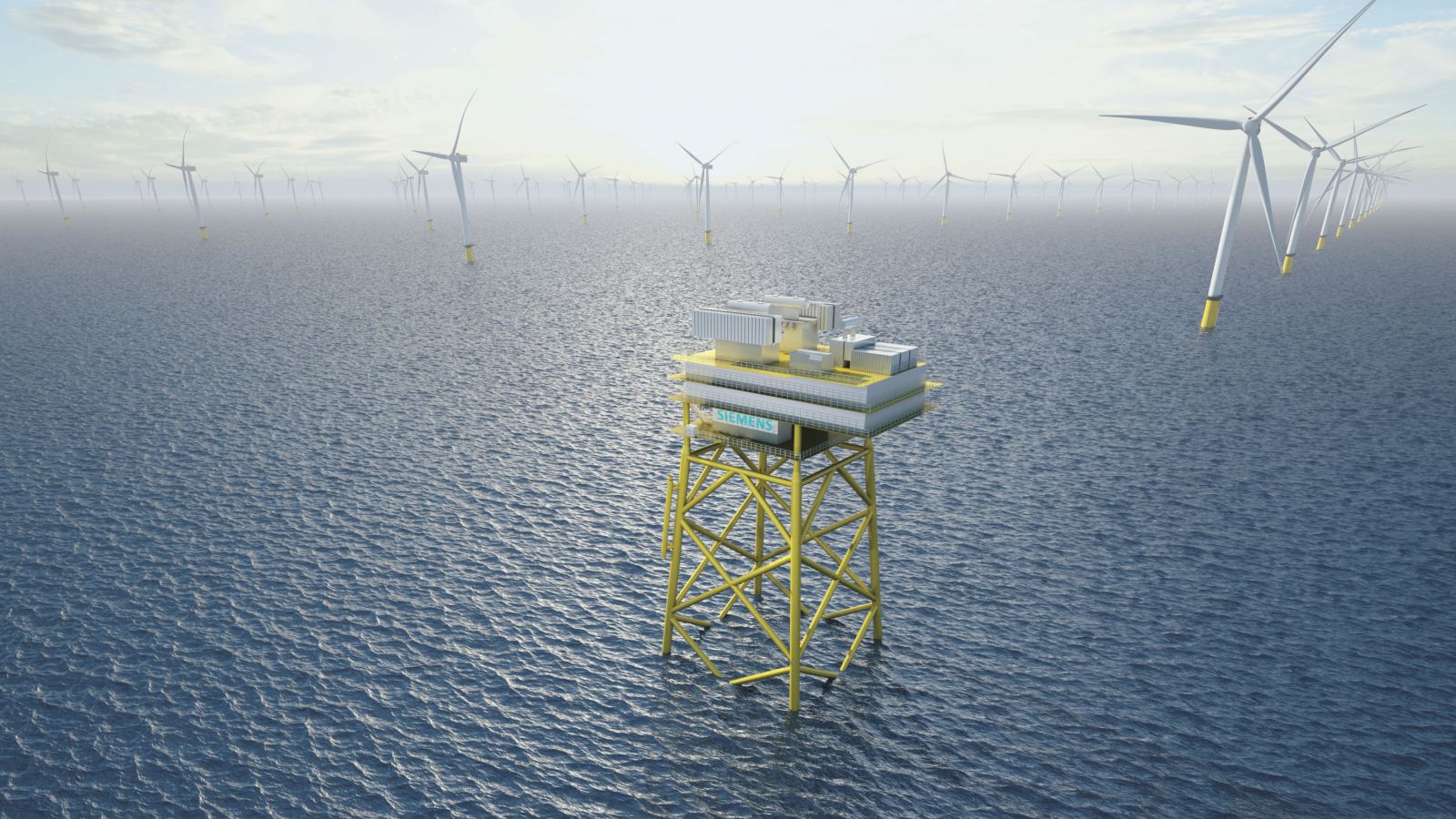New Technology Cuts Cost of Wind Power

Siemens has introduced a new solution for connecting offshore wind turbines to the grid.
Presented at the National Maritime Conference in Bremerhaven, Germany, the direct-current technology enables a cost-efficient and simplified connection of offshore wind power plants far from the coast, says Siemens. Until now, these plants have been connected to the grid via large central converter platforms.
The company has now developed the transmission technology, enabling a large number of much smaller platforms to be built. With the new solution, a direct-current cable can connect several platforms sequentially in a wind farm and then route them to an onshore transformer substation. Overall, this costs less and is more efficient than the approach used with conventional platforms, says the company.
The compact design permits encapsulated high-voltage electrical equipment to be used – especially diode rectifier units (DRUs), which are installed instead of the usual air-insulated transistor modules. The system is also modular and flexible when it comes to installation. The volume of the platform structures is reduced by four-fifths, and the weight is cut by two-thirds. As a result, costs are reduced by more than 30 percent. At the same time, the new solution enables transmission capacity to be increased by one-third, while transmission losses fall by one-fifth.
"We have already successfully commissioned four offshore direct-current connection projects,” said Jan Mrosik, CEO of the Energy Management Division at Siemens. “Now we are applying our experience directly to the next generation of direct-current grid connections. Our new solution will play a major role in decreasing the cost of offshore wind power below ten cents per kilowatt hour by 2020. "
A diode rectifier unit has a transmission capacity of 200 megawatts (MW). Typically, two DRUs are installed on one platform. Up to three of these new platforms can be connected to each other to create an offshore grid node that replaces collection platforms in the wind farms. This link enables a connection to the mainland of multiple offshore wind farms with a total capacity of up to 1,200 MW.
The electricity is transported to a grid infeed point on land via cables. A converter station converts the direct current back into alternating current for subsequent transmission and distribution. The land station will also be built by Siemens using a proven design.
Thanks to high-voltage direct-current (HVDC) transmission technology, the new system's transmission losses, including cable losses, are just three percent. The use of direct-current instead of alternating-current transmission to connect wind farms to the grid is made cost-effective by the new technology for cable lengths of more than about 80 kilometers.
The core of the new transmission technology consists of the DRU, the transformer, the smoothing reactor, and the rectifier – all combined in one tank. The use of the DRUs and the encapsulated DC-CS direct-current switchgear decreases the installation space by more than 80 percent compared with air-insulated technology. For the first time, Siemens is using biodegradable ester liquids in the DRU to insulate high-voltage direct-current equipment. Compared with mineral oils, these are not only more environmentally friendly, they are also flame-resistant. The DRU is designed for many years of continuous operation with minimal maintenance requirements.
The new technology is being funded by the German Federal Ministry of Economics and Energy (BMWi) as part of the federal government's sixth energy research program under the supervision of project sponsor Jülich.
